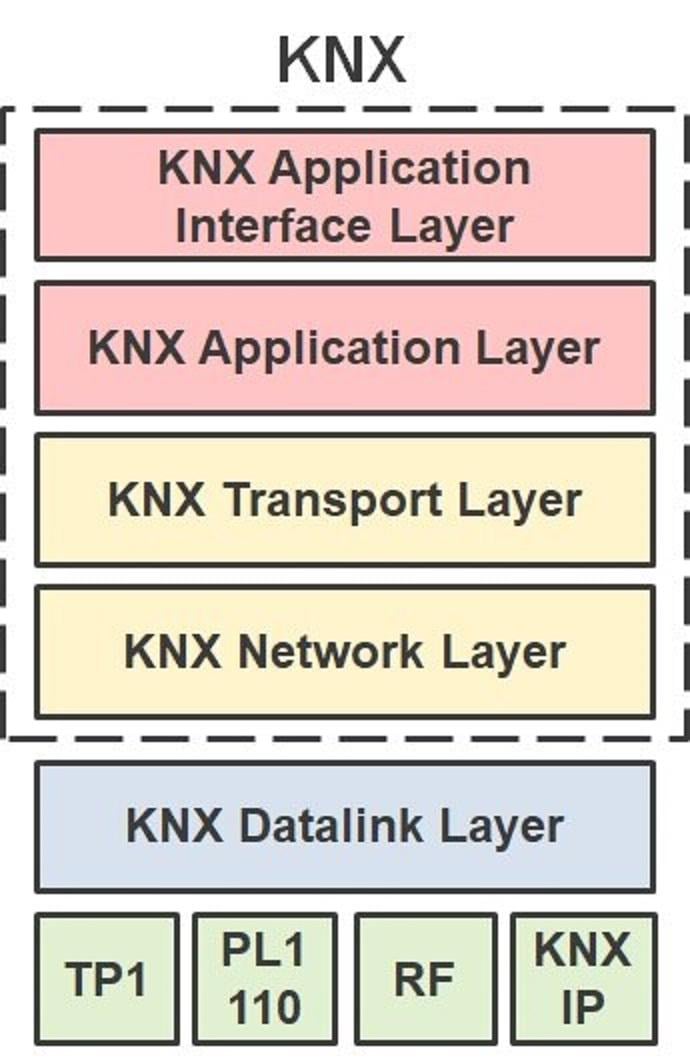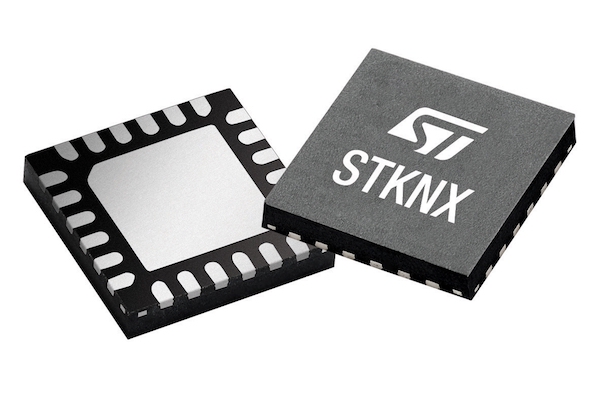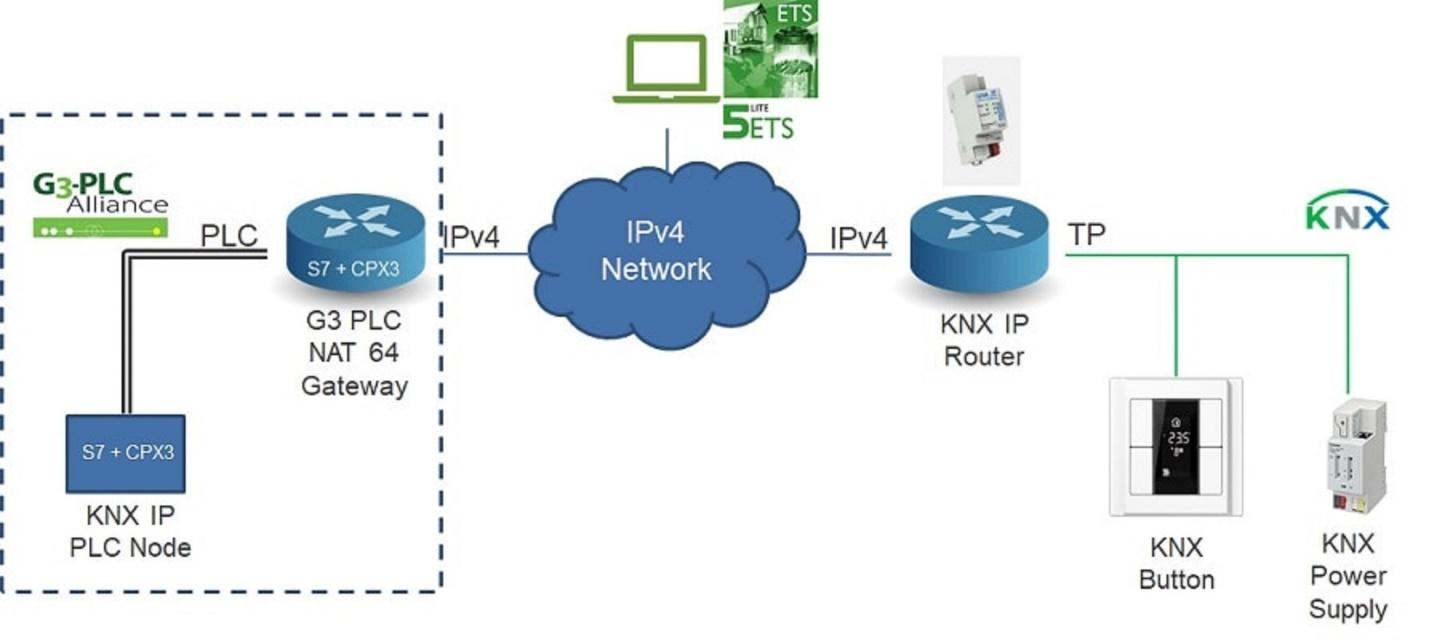The wired Fieldbus connectivity
standard is getting a foothold in the IoT world by facilitating smart
building solutions for lighting, HVAC, access control, and fire safety.
KNX is sometimes weighed against familiar IoT protocols used in home automation such as Thread, ZigBee, and Z-Wave, as well as others that may not be as familiar because they are specific to home automation, such as Loxone, Smart-Bus, and HM-IP.

The support for four different physical layers—twisted pair, RF, power line, and Ethernet—allows KNX to accommodate a wide array of connected devices inside the building. Image from Renesas
While chipmakers like ON Semiconductor and STMicroelectronics are offering the KNX-based connectivity solutions over twisted pair (TP) networks, Renesas Electronics is implementing KNX over powerline communication (PLC) deployments.
STMicro joined hands with Tapko Technologies GmbH to create a KNX design solution for connecting devices such as smart lights, HVAC controllers, home alarms, and smart appliances to twisted-pair networks. In this network node—the STKNX—a KNX software stack codeveloped by ST and Tapko runs on ST's STM32 microcontroller.

The STKNX transceiver. Image from STMicroelectronics
The STKNX functions as a KNX transceiver for twisted pair wired connectivity in Tapko devices. The STKNX transceiver comes with an evaluation kit, EVALKITSTKNX, which contains everything needed to develop a KNX node. That includes an STM32F103RBT6 microcontroller, Arduino-compatible headers for custom function expansion, and a sample LED-dimming application.
KNX over PLC Networks
More recently, some KNX building automation networks are converging and colliding with the Internet of Things (IoT) bandwagon to form what some industry observers call the KNX IoT for smart buildings.One of the practical manifestations of KNX IoT came early this year when Renesas announced the implementation of KNX protocol on its G3-PLC™ solution. The Japanese chipmaker’s powerline modem allows designers to build KNX control functions on G3-PLC systems.
The PLC technology combines data line and power line onto a single cable system to facilitate connectivity throughout the building over longer distances and across the walls. Next, G3-PLC, an open standard for narrowband low-frequency powerline communications, developed and maintained by the G3-PLC Alliance, provides high-speed and highly reliable connections over the existing powerline grid.
The G3-PLC protocol, primarily developed for energy metering applications, is now being increasingly adopted in smart building applications such as HVAC, lighting, fire and safety, and building access security.

The KNX button connected to twisted pair is linked to a KNX router for handling communications with the PLC network. Image from Renesas
The powerline modem comprises Renesas’ OFDM PLC software modem R9A06G037, a Renesas Synergy MCU and the ISL15102 chip that serves as the power line driver. It combines the Renesas G3-PLC stack based on the Synergy Software Package (SSP) with a software stack from German KNX specialist Tapko.
The convergence between the KNX and PLC technologies as demonstrated by the above design example is a harbinger of the upcoming KNX IoT offshoot. The KNX Association is already working on the KNX IoT standard that aims to be a full IP-based protocol.
Featured image used courtesy of STMicroelectronics.

No comments:
Post a Comment